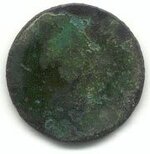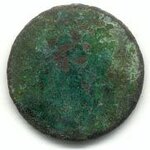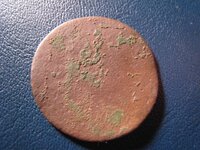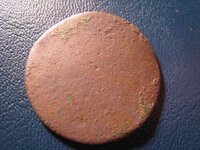minton7
Hero Member
I was hunting at an old homestead site tonight and found a copper disc about the size of a large cent. It is worn smooth as far as I can see.... but im currently cleaning it in hopes of seeing something.... it feels as if one side has a sorta raise to it.... but the other side is sorta sunk in.... or maybe just level in comparison to the other raised side..... it came up between 78-80 on my XLT..... it is green in color...... could this be a colonial copper ? Here are the pix..... as you can see... it is worn TOTALLY smooth.... what looks like an "0" on one scan is just corrosion.... the weight is .3 oz., which is the exact same as a large cent.... and the diameter is the same a a LC, but this coin seems to be thinner on the rim... I thought it could just be because it is worn.... I now think this is prolly a LC ......judge for yourself
Amazon Forum Fav 👍
Attachments
Upvote
0






 . Well I will look but that may be a wee bit too worn hehe. You can try cleaning it, there may be some detail under there or it could be a smooth disk. If it were my coin I would do an olive oil soak or electrolysis, probably the latter because I am trying to get more experience at electrolysis. Let us know how the cleaning goes.... and go slow. HH,
. Well I will look but that may be a wee bit too worn hehe. You can try cleaning it, there may be some detail under there or it could be a smooth disk. If it were my coin I would do an olive oil soak or electrolysis, probably the latter because I am trying to get more experience at electrolysis. Let us know how the cleaning goes.... and go slow. HH,


